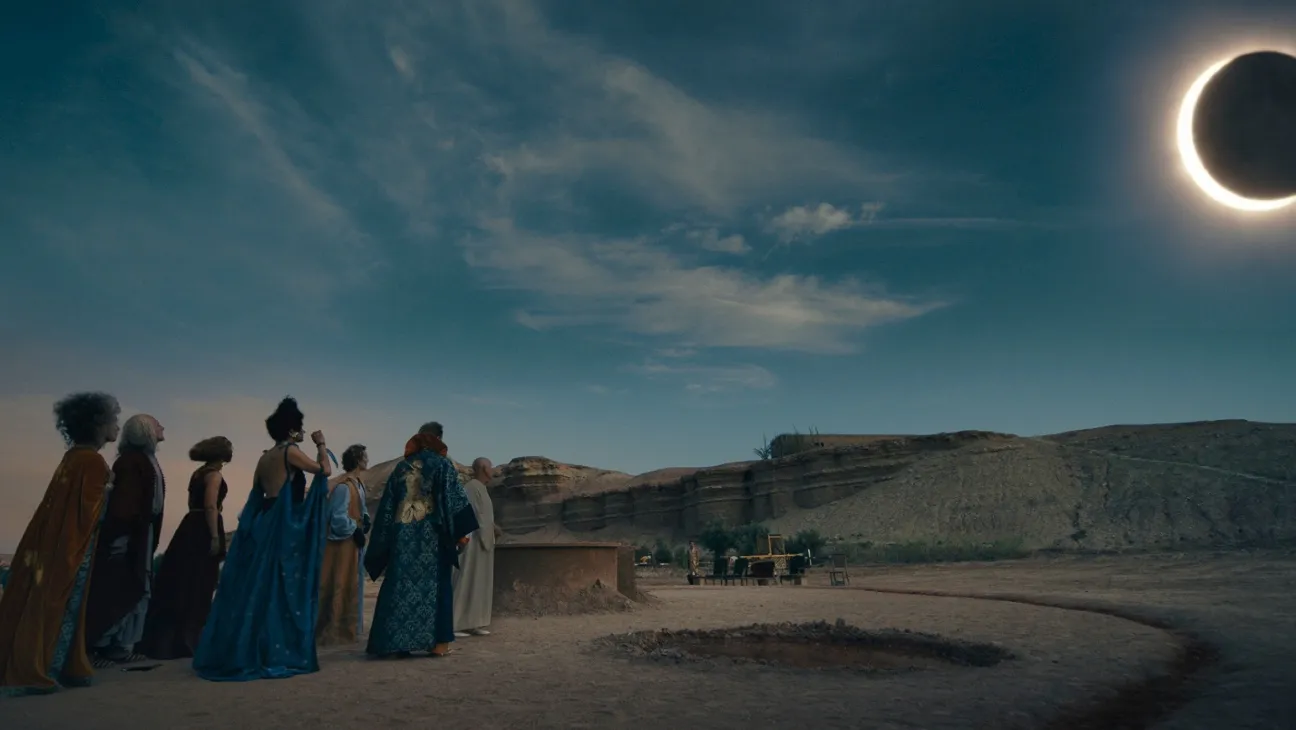Robert Schwentke’s “Seneca – On the Creation of Earthquakes” ushers audiences into the fraught final hours of Lucius Annaeus Seneca, the Roman philosopher, playwright, and statesman. With John Malkovich embodying the titular figure, the narrative unfolds as Emperor Nero, Seneca’s former pupil, decrees his mentor’s death.
The film anchors itself in the familiar terrain of ancient Rome, yet from its inception, a current of the unconventional, a distinctly theatrical sensibility, courses beneath the surface, suggesting that historical representation here will be anything but staid.
What follows is an examination of a man confronting mortality under the capricious shadow of absolute power, a historical episode reimagined with a peculiar, disquieting verve.
The Philosopher as Performer
The Seneca presented is a creature of immense intellectual vanity, a renowned mind whose philosophical pronouncements are matched only by his profound self-absorption. Once the guiding hand to a young Nero, he now faces the lethal ingratitude of his emperor.
This Seneca is an insufferable sage, a geyser of words, whose pomposity inflates even as the shadows of his own making close in. John Malkovich delivers a performance steeped in mannerism, a theatrical, almost declamatory rendering of Seneca’s voluminous dialogues—much of it reported to be lifted from the philosopher’s own texts.
He captures a man desperate to script his own exit, transforming the messy, terrifying business of a forced suicide into one last grandiloquent performance. His final interactions, whether with his stoic wife Paulina or the dwindling circle of acolytes, become less about shared grief or wisdom and more about securing the stage for his meticulously curated martyrdom.
Rome Through a Distorting Glass
Schwentke’s vision of Rome is one of calculated dissonance, a realm of “aggressive anachronism.” The ancient setting is jarringly punctuated by contemporary vernacular—Nero styled as “Mr. President,” characters peppering their speech with modern slang—and incongruous artifacts, like oversized paper maché microphones or the Emperor’s lyre appearing as a proto-rock guitar. This approach amplifies the film’s pervasive theatricality.
Shot in the stark Moroccan desert, its action often confined to an open colonnaded pavilion, the production possesses a stage-like minimalism, a fitting arena for a playwright’s demise. The visual grammar reinforces this artificiality; a distorting fisheye lens and unsettling camera angles frequently conspire to create a hallucinatory, uncomfortable spectacle.
Costumes are a riot of deliberate grotesquerie—Geraldine Chaplin’s Cecilia swathed in an orange terrycloth jumpsuit, Mary-Louise Parker’s Agrippina framing her face with a gold serving platter—each an emblem of upper-class indulgence verging on the absurd. An arch, flowery narration further underscores the artifice, distancing the audience from any semblance of historical realism.
Tyranny’s Shadow, Satire’s Sting?
At the rotten core of this Roman circus is Tom Xander’s Emperor Nero, a figure of petulant psychopathy, his reign a canvas for exploring the mechanics of unchecked power. Against this backdrop, Seneca’s own legacy is scrutinized, his Stoic pronouncements on virtue and reason clashing loudly with his accumulated wealth and his long, morally ambiguous service to a tyrant.
The film relentlessly questions his integrity, painting him as a compromised intellectual, a sell-out whose philosophical detachment curdled into expedient hypocrisy. There is a clear effort to make these ancient Roman corruptions speak to present-day anxieties about leadership and societal decay, offering a critique of elitism and the performative nature of public life.
The predominant tone is that of a dark, almost nihilistic comedy, milking the grim absurdity of Seneca’s protracted, agonizingly verbose attempts to end his own life. Whether this satire possesses a genuinely sharp edge or merely postures with forced, “flaccid” provocations is a central question. The film’s enigmatic subtitle, “On the Creation of Earthquakes,” hangs unanswered, another curious element in this peculiar and often abrasive cinematic construction.
Seneca premiered at the 73rd Berlin International Film Festival on February 20, 2023, and was released in German cinemas on March 23, 2023. In the United States, it became available on digital platforms and DVD on April 8, 2025. Seneca can be streamed on Hoopla and is available for purchase or rental on Amazon Video, Apple TV, and Fandango At Home.
Full Credits
Director: Robert Schwentke
Writers: Robert Schwentke, Matthew Wilder
Producers and Executive Producers: Karim Debbagh, Frieder Schlaich, Irene von Alberti
Cast: John Malkovich, Tom Xander, Louis Hofmann, Geraldine Chaplin, Julian Sands, Andrew Koji, Lilith Stangenberg, Mary-Louise Parker
Director of Photography (Cinematographer): Benoît Debie
Editor: Michał Czarnecki
Composer: Martin Todsharow
The Review
Seneca
Schwentke’s ‘Seneca’ offers a deliberately jarring portrait of the philosopher's demise, with Malkovich delivering a mannered tour-de-force as the insufferable sage. Its aggressive anachronisms and theatricality create a visually distinct, if often alienating, experience. While it grapples with power and hypocrisy, the film's satire feels more like a discordant posture than a sharp critique, leaving a residue of ambitious but ultimately grating artifice.
PROS
- John Malkovich’s dedicated portrayal of Seneca.
- Unconventional and sometimes striking visual style and costuming.
- A bold, if not always successful, anachronistic approach to historical material.
CONS
- The central character’s overbearing pomposity and extreme verbosity.
- An alienating and frequently uncomfortable viewing experience.
- Satirical elements that often feel strained or heavy-handed.
- A pervasive sense of artificiality that can obscure deeper meaning.


















































